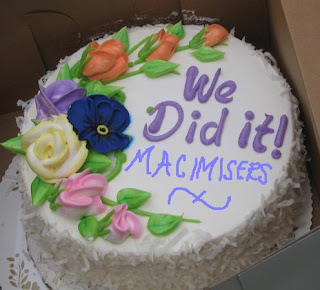
It has been a long, yet rewarding Project MACIMISE journey for all of us. In particular, we are all currently finishing up the details of our research paper. In light of this, I'd like to share with you the names of those I've interviewed, and of which are located below. Good luck in completing your paper!
PERSONS INTERVIEWED
Arceo, A. Personal INTERVIEW. 20 March 2010.
Female, age 42, Agat. Founder of Huråo Academy with 20 years of teaching Chamorro and expertise in Chamorro language and culture.
Bamba, J. Personal INTERVIEW. 14 March 2010.
Male, age 29, Agana Heights. Coconut-leaf and pandanus-leaf weaver of 15 years and translator for the U.S. Air Force and foreign language instructor for junior translators.
Cruz, J.A. Personal INTERVIEW. 12 March 2010.
Male, age 33, Mangilao. Coconut-leaf and pandanus-leaf weaver of 15 years and English instructor for the University of Guam’s TRIO Programs, Student Support Services.
Cruz, J.Q. Personal INTERVIEW. 12 March 2010.
Male, age 64, Barrigada Heights. Guam Education Policy Board member, former University of Guam President, retired UOG Administration and Supervision Program Advisor/Associate Professor.
Cunningham, L. Personal INTERVIEW. 22 March 2010.
Male, age 67, Agat. Researcher, educator, and author of ancient Chamorros and traditional navigation and seafaring.
Guerrero, A. Personal INTERVIEW. 20 March 2010.
Male, age 62, Chalan Pago. Chamorro teacher of 25 years with specialization in Chamorro culture and language.
Gumataotao, A. Personal INTERVIEW. 17 March 2010.
Female, age 43, Toto. Teacher assistant with specialization in cooking Chamorro food.
Gumataotao, L. Personal INTERVIEW. 15 March 2010.
Female, age 59, Agana Heights. Former administrator and ESL teacher in the Guam Department of Education.
Lastimoza, R. Personal INTERVIEW. 16 March 2010.
Female, age 46, Tamuning. First grade teacher in the Guam Department of Education.
Laguana, R. Personal INTERVIEW. 15 March 2010.
Male, age 50, Mangilao. Adminstrator for the Guam Department of Education Chamoru Studies Division with specialization in the following: Chamorro language, culture, history, translating, editing, transcribing, interpreting, and tour guiding.
Naputi, J. N. Personal INTERVIEW. 23 February 2010.
Male, age 59, Tamuning. Farmer, writer, and agriculturalist for over 50 years.
Naputi, J.S. Personal INTERVIEW. 6 February 2010.
Female, age 56, Tamuning, Coconut-leaf weaver with specialization in arts and crafts.
Rojas, D. Personal INTERVIEW. 17 March 2010.
Female, age 61, MongMong, Chamorro teacher in the Guam Department of Education.
Sablan, P. Personal INTERVIEW. 25 March 2010.
Male, age 46, Santa Rita. Coconut-leaf weaver, cultural tattoo artist, stone sculpture and body ornamentation (shell) specialist.
Salas, A. Personal INTERVIEW. 26 March 2010.
Female, age 52, Piti. Chamorro teacher with specialization in the Chamorro language and culture.


























